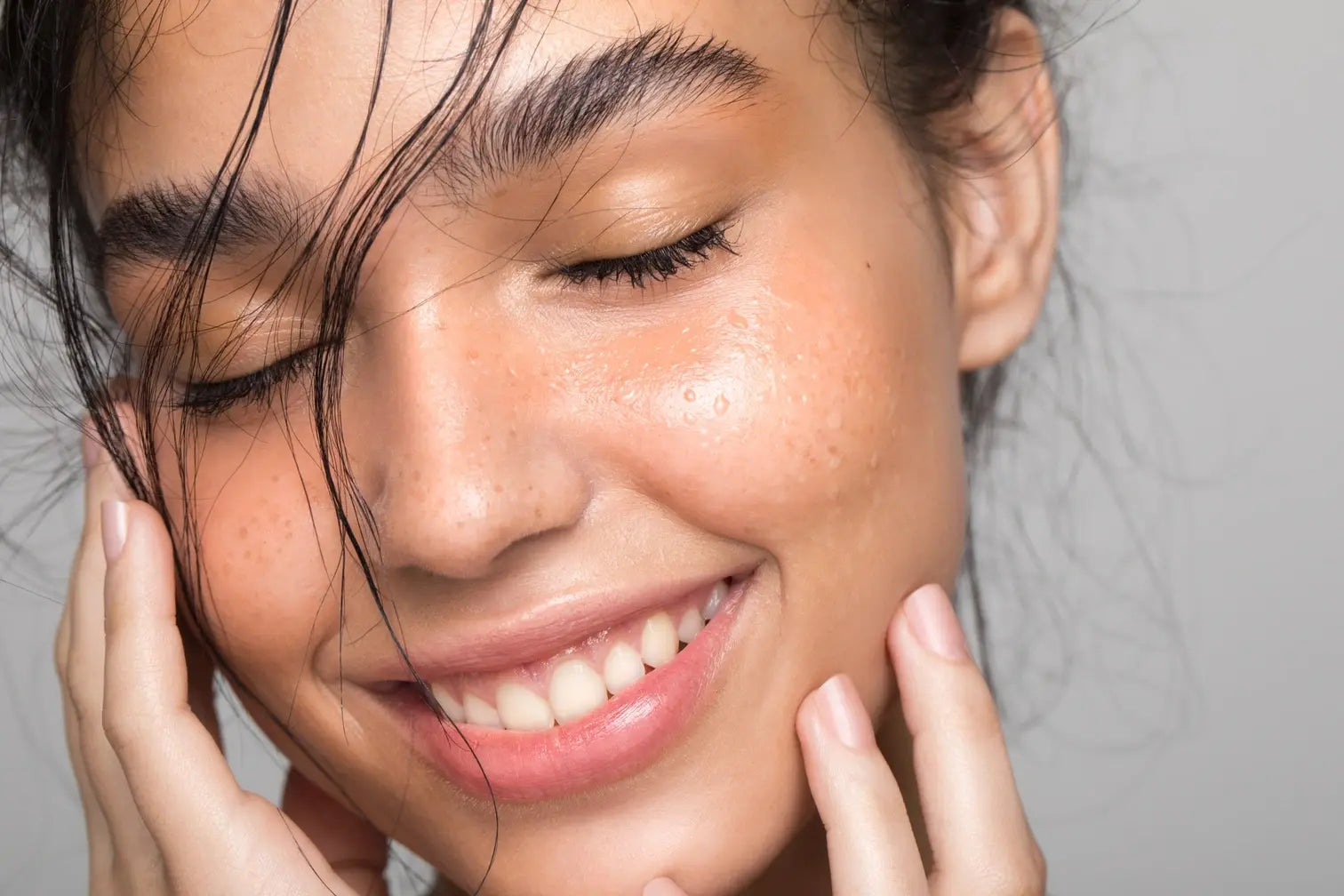What is Combination Skin?
- Larger than usual pores
- Acne
- Shiny, greasy skin
- Rough or irritated skin
- Redness
- Flaky patches
What Causes Combination Skin?
How can you create an effective combination skin care routine?
The basic framework of a skincare routine for combination skin follows the same process as that for most skin types:1
- Cleansing the skin
- Applying toner
- Massaging in a serum and moisturizer
- Using daily sun protection
Cleansing is an important step in any skincare routine, and it is especially important for combination skin. The goal of cleansing is to remove impurities and contaminants on the skin’s surface, which are usually not water-soluble. Therefore, cleansing the skin with pure water alone is inadequate. A gentle gel cleanser requires a surfactant, but one that’s free of harsh chemicals like sulfates, parabens, and fragrances.2
How should you determine which products to incorporate into your routine?
-
Arnica Montana (Arnica Flower) Extract
: Arnica Montana is a natural extract that has been used for centuries to soothe skin inflammation, wound healing, hydration, and reduce skin discolorations like hyperpigmentations. This gentle extract also offers potent antioxidants benefits, which help to treat cellular damage and ensure glowing skin.4
-
Niacinamide
: Niacinamide is present in a wide variety of skincare products because it’s gentle, yet ultimately effective. Widely known for its anti-inflammatory, moisturizing, and antioxidant properties, niacinamide is a popular ingredient in many skincare products.5
-
Pracaxi Oil: Pracaxi oil is beneficial for wound healing and tissue healing, making it excellent for acne scarring, oily skin types, and even treating dry areas. Due to this property, pracaxi oil works well with all skin texture types
, especially combination and normal skin. This natural oil also holds moisturizing, anti-inflammatory, and anti-bacterial properties, which help keep your skin barrier healthy.6
-
Andiroba Oil
: Andiroba oil encourages collagen production and cellular turnover, helping keep skin cells as healthy as possible and improving skin texture. This healing oil also possesses anti-inflammatory benefits, reducing skin irritation and redness.7
-
Hyaluronic Acid
: Hyaluronic acid’s strength lies in its ability to permeate each layer of the skin, getting in deep to stimulate collagen synthesis. This process aids in skin regeneration and moisture retention. By retaining significant amounts of water, this ingredient keeps skin moisturized and plump.8
-
Oleic Pau Mulato Extract
: The oleic plant extract is a powerful antioxidant that also boasts anti-inflammatory effects. And when it comes to cell life, oleic extract prolongs longevity by boosting your resistance to the effects of stress.9
-
Allantoin
: Allantoin soothes inflamed and irritated skin. Its calming properties makes it an essential ingredient in skin products, reducing the appearance of itchy or dry patches.10
How should your AM vs PM routines compare?
Are OneSkin’s products good for combination skin?
- Creating a skincare routine for combination skin involves four simple steps and extra care when choosing the right products:
- Cleansing the skin
- Applying toner
- Massaging in a serum and moisturizer
- Using daily sun protection
- Skin barrier health plays a significant role in managing combination skin. Therefore, maintaining a strong skin barrier may be the key to mitigating combination skin issues.
- Harsh skincare products can worsen combination skin symptoms. Therefore, gentle high-quality products are recommended to balance the skin.
- OneSkin’s products provide a simple and effective solution for all skin types, including combination skin. Shown to fortify the skin barrier, OneSkin’s Topical Supplements provide light moisture with non-comedogenic formulas. OneSkin’s gentle daily cleanser helps restore skin’s natural lipid balance without harsh ingredients.
- https://pubmed.ncbi.nlm.nih.gov/31840424/
- https://www.ncbi.nlm.nih.gov/pmc/articles/PMC8954092/
- https://www.aad.org/public/everyday-care/skin-care-secrets/routine/safely-exfoliate-at-home
- https://pubmed.ncbi.nlm.nih.gov/35984685/
- https://pubmed.ncbi.nlm.nih.gov/24993939/
- https://link.springer.com/article/10.1007/s13555-014-0065-y
- https://www.ncbi.nlm.nih.gov/pmc/articles/PMC5796020/
- https://www.ncbi.nlm.nih.gov/pmc/articles/PMC3583886/
- https://www.ncbi.nlm.nih.gov/pmc/articles/PMC6017494/
- https://www.medicalnewstoday.com/articles/allantoin
- https://www.ncbi.nlm.nih.gov/pmc/articles/PMC5579659/




